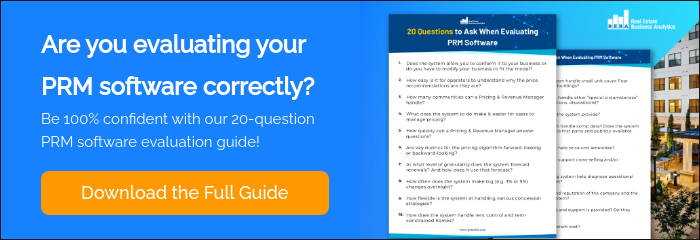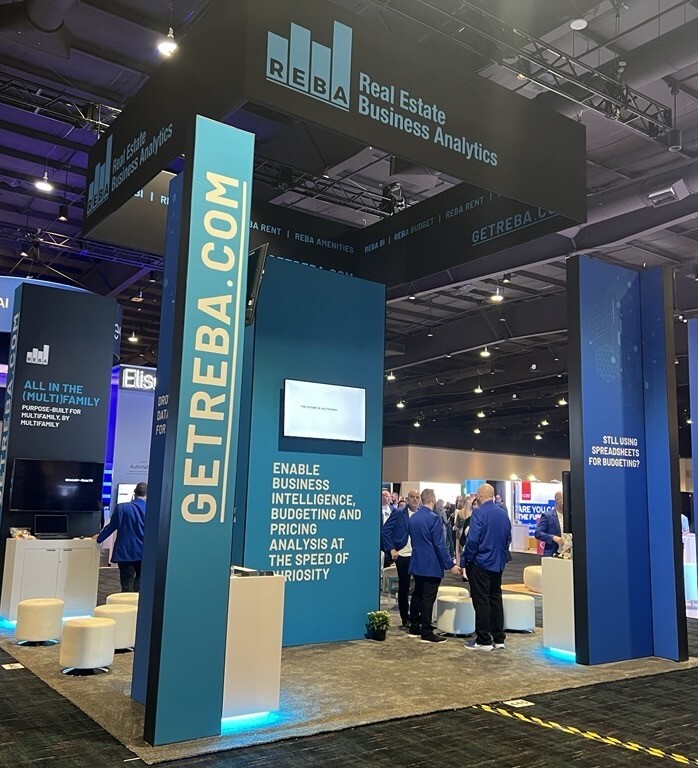Legacy pricing & revenue management systems changed the multifamily industry. Now, with almost 25 years of learning, it’s time for more contemporary approaches that reduce the total cost of ownership, improve acceptance and are more flexible in adapting to recent and future changes in the multifamily pricing arena.
Here are 10 questions you should ask when evaluating pricing & revenue management software. To get our comprehensive PRM evaluation checklist, click here.
Have you evaluated your PRM solution lately? Download the full checklist today!
1. Does the system allow you to conform it to your business or do you have to modify your business to fit the model?
Look for a system with a sufficient range of parameters to allow you to configure the model to your business strategy—at the unit, unit type/floorplan, community, sub-market, market and portfolio levels
2. How easy is it for operators to understand why the price recommendations are what they are?
Look for an easy-to-understand dashboard that walks users through how the system arrived at its price recommendations.
3. How many communities can a Pricing & Revenue Manager handle?
The more the better. Anything less than 20,000 units means a higher cost for maintaining the system than you should accept.
4. What does the system do to make it easier for users to manage pricing?
Look for a user experience design that minimizes the number of clicks to get to important functions; the ability to propagate settings from higher levels (e.g. market) to lower levels (e.g. unit type); robust reporting; easy exportability
5. How quickly can a Pricing & Revenue Manager answer questions?
Look for purpose-built metrics that make it easy to assess the operational situation, see key metrics and relate those to how and why the system is making its recommendations.
6. Are key metrics for the pricing algorithm forward-looking or backward-looking?
Look for systems that focus on availability and lease forecasts driven by current leads pipelines rather than focused on occupancy.
7. At what level of granularity does the system forecast renewals? And how does it use that forecast?
Lease-level likelihood to renew forecast used solely for forecasting supply (i.e. NOT used to differentiate individual renewal prices).
8. How often does the system make big (e.g. 3% or 5%) changes overnight?
Less than once a week, preferably less than once every two weeks
9. How flexible is the system at handling various concession strategies?
Look for flexibility to price with or without concessions and to apply concessions at any level from unit to portfolio
10. How does the system handle rent control and rent-constrained homes?
Look for a configurable approach to handle all types of rent constraints including price limits, increase limits, increase frequency limits and process constraints (e.g. increased notice time based on resident tenure or amount of increase)






SHARE